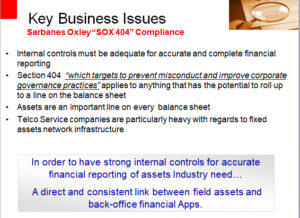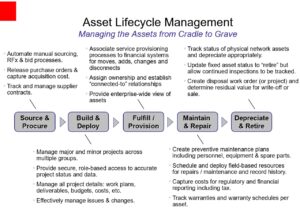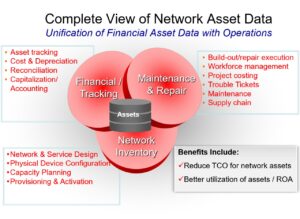EPMO/PMO Establishment
& Escalation Frameworks
Are you looking for ways to take your business to the next level? Do you want to ensure that your company is utilizing its resources efficiently and effectively? If so, then our Maturity Model Design services are exactly what you need. we’ll explain the advantages of using our services and how they can help you get the most out of your business.

What is a Maturity Model?
A maturity model is a framework that shows how capable an organization or system is of achieving continuous improvement. It is important to note that maturity models are not static; they are constantly evolving as businesses and systems become more complex.
InVision surveyed thousands of companies to explore the relationship between design practices and business performance. What we discovered in the survey was that design practices are strongly correlated with business performance. This means that good design practices help businesses achieve their goals more quickly and efficiently.
We design a Maturity Model called the Capability Maturity Model (CMM). The model consists of five stages that show the process of embedding service design into an organization and structures the transformation from a waterfall model to a hybrid model. The evaluation of our model has shown that it is effective in helping organizations achieve a more agile development process.
By understanding how design practices and business performance are related, managers can make informed decisions about which design methods to use and how to improve their organisation’s capability to deliver high-quality services.
What is the Business Design Maturity Model?
Design maturity is an important concept that businesses should be aware of, as it can help them improve their bottom line performance. The Business Design Maturity Model is a five-stage model that shows the process of embedding service design into an organisation and structures the transformation needed to reach maturity.
The first stage of the model is called exploration, and it involves understanding the needs of your customers and users. The second stage is development, in which you create prototypes and test them with users. The third stage is implementation, in which you bring the design concepts into reality and make the changes necessary to improve your product or service. The fourth stage is refinement, in which you continue to make adjustments to your design and ensure that it meets the needs of your customers and users. The final stage is sustainability, in which you continue to improve your design as the needs of your customers and users change.
By following the steps in the Business Design Maturity Model, businesses can better understand how service design can help them achieve success. Maturity allows businesses to self-improve and adapt as needed, which can lead to increased customer satisfaction and decreased customer churn. As we mentioned earlier, design maturity is about being judged by how good your organisation or system is at self-improvement. By knowing your organisation’s current design status, you can make informed decisions about where to invest in service design and how to improve it further.
Who Can Benefit from this Model?
Many organisations have a need for design services, but not all of these organisations are able to effectively carry out these services. The Maturity Model is designed to provide businesses of all sizes with the necessary tools and resources to effectively design their products and services. By using the Maturity Model, businesses can improve the quality of their products and services, reduce costs, and increase customer satisfaction.
The Maturity Model is designed for businesses of all sizes and can be used to improve the quality of products and services, reduce costs, and increase customer satisfaction. To learn more about the Maturity Model and how it can benefit your business, please contact us today.
How to Embed Service Design at Scale
We offer Maturity Model Design services, which helps organisations embed service design at scale. Our model is tailored to the specific needs of your organisation, and we help you to validate your maturity level. By following our steps, you can ensure that your service design is effective and relevant. Contact us today to learn more!
What is the Business Value of Design?
At iWork, we believe that design is not just a pretty face—it’s an essential part of building products that help businesses succeed. That’s why we offer Maturity Model Design services, which help organisations understand and improve the business value of design.
The higher in the organisation the designer can operate, the more value he can add. This is because he has access to deeper insights and can better understand the customer and the business. As a result, he can create products and services that both end users and the organisation value.
The more mature design is, the higher the designer can move in the organisation. This is because he has a better understanding of how design affects business outcomes. He can also help organisations transition from design to implementation, and from implementation to continuous improvement. In short, by offering Maturity Model Design services, we are helping organisations achieve their design goals in a way that benefits both them and their customers.
Exploring the Relationship Between Design and Business Success
Design is an essential part of any business, and as such, it is vital that businesses have a framework in which to measure the success of their designs. One such model, referred to as the Business Design Maturity Model, has been found to have a significant impact on a company׳s competitiveness.
The model is aimed at business strategists, innovators, designers, agile coaches, and service design agencies and is based on five organic levels of design maturity. At each level, design becomes more effective in supporting business growth.
In our company, we specialize in providing services for businesses at all five of the model׳s maturity levels. By working with you and understanding your specific needs, we can help you to reach your business goals faster and with greater success. Talk to us today about how we can help you!
Why Implement a Maturity Model?
There are a few reasons why implementing a maturity model may be beneficial for your company. First, a maturity model can help you understand your current level of service design maturity. This information can help you prioritize your design efforts and make better decisions about where to focus your resources. Additionally, a maturity model can help you track the progress of your service design initiatives and identify any problems early on. Finally, a maturity model can help you to improve your service design process overall. By understanding where your company is currently and where it needs to go, you can achieve the greatest possible impact for your customers.
If you’re interested in learning more about our company’s service design capabilities, or want to see how we could help you reach your service design goals, please don’t hesitate to contact us. We would be happy to discuss this further with you.
What Did InVision Find in Their Survey?
Design maturity is a term that is often used in the design community to describe a company’s level of experience and expertise in design. InVision recently released their “The Design Maturity Model” report, and while the report focused on businesses across 24 industries, one section of the report that caught my attention was the design maturity levels of companies.
According to the InVision report, 41% of the companies surveyed were at Level 1: Producers companies that focused only on creating designs. At Level 2, Companies that began to focus on user experience (UX) began to take shape and began to design for the end user and their needs. Level 3 is where companies began to design for multiple stakeholders, such as business owners, customers, and employees. Level 4 is where companies began to design for long-term sustainability and began to think about how their designs will impact their company’s legacy. Level 5 is where companies began to design for global impact and began to think about how their designs will be seen by people outside of their company. Finally, Level 6 is where companies began to design for the future and began to think about how their designs will impact not just their company, but the world.
While these are just a few of the design maturity levels described in the InVision report, it is clear that businesses who are at Level 1 or 2 are likely struggling with user experience (UX) and may not be experiencing the benefits of better design. Moving up the maturity levels may result in better UX designs, but it may also require additional resources (such as more UX professionals) and may take longer than expected.
If you are a business owner or designer who is looking to improve your design skills, it is important to keep in mind which level your company is at and make sure that you are focusing on the right things. By taking the time to survey your company and analyze your design practices, you can start to move up the maturity levels and
How Can the Engagement Factory’s Maturity Model Help Companies?
As businesses continue to shift towards a more digital-based operation, it is essential that they have a solid understanding of their service design maturity levels. The Engagement Factory’s Maturity Model can help companies to identify their current level of capability in relation to the services they provide, as well as provide actionable advice on how to improve upon these levels.
The model divides service design into four maturity levels, with each level providing different benefits and challenges. Level 1 organisations are typically those that are still reliant on manual processes and are limited in their ability to adopt new technologies. Level 2 organisations are those that have begun to adopt digital technologies, but are still subject to disruptions and are struggling to maintain consistency in their services. Level 3 organisations have fully embraced digital technologies and are able to streamline their processes, while also providing a high level of customer service. Level 4 organisations are those that have reached the pinnacle of service design maturity, able to provide consistent and high-quality services across all channels and devices.
By implementing the Maturity Model, companies can not only understand their current level of capability, but also identify areas in which they need to grow in order to stay ahead of the competition. The model provides a clear roadmap for growth, and can help companies take the necessary steps necessary to stay ahead of the curve.
If you’re looking to take your company to the next level, look no further than our Maturity Model Design services. We can help you develop a model that reflects your organization’s current capabilities and lays the foundation for future growth. Contact us today to get started!
If you’re looking for a way to maximize your investments and ensure project success, then look no further! Our company offers portfolio and program mapping services that can help you make the most of your resources. In this blog post, we’ll discuss why these services are important and how they can help you achieve your goals.

Introduction to Portfolio/Program Mapping Services
Are you looking for a way to improve your management of your projects and programs? Do you feel like you’re drowning in information and struggling to keep up? If so, you’re not alone. Many business owners feel overwhelmed by the sheer volume of information and projects on their plate.
That’s where we come in. We offer portfolio/program mapping services. Our team of experts will help you organize all the information and projects on your plate into cohesive, manageable portfolios. This will make it easier for you to achieve your strategic goals and stay on track.
We understand that not everyone is familiar with the concept of portfolio management, so we also provide training and support throughout the process. We want you to be successful, and we’re here to help you get there.
If you’re interested in learning more about our portfolio/program mapping services, or if you have any questions, please don’t hesitate to contact us. We would love to hear from you.
Benefits of Linking and Aligning Investments
At Software AG, we believe a strategic portfolio management approach is the key to aligning your IT with business.
A portfolio, programme and/or project office (PMO) may provide this service, but the change of title signifies to everyone in the organization, particularly to those who are responsible for investing the organization’s resources, that portfolio management is a critical part of their role.
The benefits of linking and aligning investments include:
1. Increased business value.
By aligning projects with an organization’s strategic direction, making the best use of limited resources, a strategic portfolio management approach can lead to increased business value. In fact, it is estimated that good portfolio management increases business value by as much as 25%.
2. Improved decision-making.
Informed decision-making is essential for ensuring that investments are made in a rational and effective manner. By understanding the dependencies between projects, you can make better decisions about which ones to continue and which ones to discontinue.
3. Agility and flexibility.
A portfolio that is managed in an agile and flexible way can be rapidly adapted to changing market conditions. For example, if your business goals change due to new market conditions.
4. Increased efficiency.
A strategic portfolio management approach can lead to decreased costs and increased efficiency. For example, by using software that automates the process of identifying and tracking dependencies between projects, you can save time and money in your organization.
To learn more about our portfolio/program mapping services, please visit our website or contact us for more information.
What is a Portfolio?
A portfolio is a collection of projects, programs, and outcomes that are managed together to achieve a common goal. In our company, we offer Portfolio/Program Mapping services. This process oversees all projects and programs in an organization, but focuses on the overarching goals and how projects and programs work together to achieve these goals.
By following the proper project management processes, portfolios can be made up of any number of projects or programs in various stages of completion. The portfolio workbench provides a central location to view and monitor the progress of the program, the projects, and demands that are placed on the project. By effectively managing your portfolio, you can ensure that your organization achieves its goals.
The Benefits of Portfolio Management
At our company, we offer portfolio/program mapping services that help businesses align their projects with their overall strategic direction. By doing this, businesses can make the best use of their limited resources and achieve a higher level of success. Here are some of the benefits of portfolio management:
1. Increased Business Value. By aligning projects with an organization’s strategic direction, portfolio management allows businesses to make the most of their resources. This is especially important in times of economic uncertainty, as it allows companies to focus their efforts on those initiatives that have the greatest potential for growth.
2. Improved Efficiency and Effectiveness. Good project management ensures that projects are carried out in a timely and efficient manner. This not only saves companies time and resources, but it also leads to a higher level of productivity and quality control.
3. More Flexible Use of Resources. Portfolio management allows businesses to make the best use of their limited resources. This is because it allows them to prioritize projects and mobilize the necessary resources when necessary.
4. Reduced Risk and Less Stress. By taking a strategic approach to project management, businesses can reduce the risk of failure and minimize the amount of stress they experience during times of turmoil.
In conclusion, portfolio management is an essential tool for businesses of all sizes. By using our portfolio/program mapping services, you can benefit from the many benefits that this approach has to offer.
What Should you Look for in a Project Portfolio Management Software?
When it comes to selecting the right project portfolio management (PPM) software, there are a few key features that you will want to consider. First and foremost, you will need to find a tool that is able to handle all of your project data. Second, make sure that the software has the ability to rank your projects based on different criteria. Third, make sure that the software has the ability to monitor and manage your project risks. Finally, make sure that the software has the ability to provide you with trend data regarding your projects.
By following these tips, you will be able to select the best PPM software for your needs.
Why is Portfolio Management Important?
In today’s business world, the success of a project is largely contingent on the quality and alignment of its projects. With a portfolio management process in place, you can ensure that each and every project is aligned with your organization’s overarching goals and objectives. Furthermore, a proper portfolio management process helps to streamline the decision-making process, improve communication across team members, and maintain a sense of momentum and accountability. As a result, businesses that employ a portfolio management process are typically more successful than those that do not. If you’re looking to improve the quality and performance of your projects, then it’s important to invest in a portfolio management solution.
How to Map Innovation Projects?
Many organizations today are looking to map their innovation projects in order to better understand their business strategy and how their various initiatives fit together. We at InnoCentive offer this same type of service, and we would love to teach you how to do the same.
We offer a variety of services that help you map your innovation projects, including program mapping, portfolio mapping and trend mapping. Our goal is to help you understand your business strategy and how your initiatives fit together. By mapping your projects, you can avoid getting buried in the tools and platforms and instead focus on the goals you want to achieve.
We hope that this blog post has taught you something new about our company and the services we offer. If you have any questions, please do not hesitate to contact us.
What are the Benefits of Model Portfolios?
There are many benefits to using model portfolios, and our company is passionate about providing these services to our clients. Model portfolios make it easier for professionals to take a risk-adjusted approach to investing, and they offer diversification by asset class. Additionally, model portfolios are managed and built using a range of investment tools, which gives advisers a range of options when constructing their portfolios. Finally, model portfolios allow financial professionals to outsource the day-to-day management of their clients’ investment portfolios while preserving their client-adviser relationship.
These are just a few of the benefits that are available when using model portfolios. If you are interested in learning more about our services, please do not hesitate to contact us.
How Can AmeriCloud Help with Portfolio, Program and Project Management?
At AmeriCloud, we understand that a portfolio is a collection of projects and programs that are managed as a group to achieve strategic objectives. Portfolio management, program management, and project management are all important management system disciplines that help prioritize objectives and align resources to achieve these goals.
AmeriCloud offers Portfolio/Program Mapping services to help organizations bring their strategic vision to life. Through business analysis, we help organizations identify which projects are aligned with their business goals and which are not. This helps to optimize the project portfolio and ensure that projects are executed as planned.
Whether your organization’s projects are aligned with business goals or not, PPM software will help your PMO centralize demand intake and optimize the project portfolio. With the help of AmeriCloud, your organization can achieve success in executing its strategic goals and objectives.
Are you looking for ways to streamline your company’s reporting process and ensure that tasks are properly managed? Are you in search of a reliable framework for escalating issues as they arise? If so, then this blog post is for you! In it, we will discuss the benefits of our reporting methodologies and escalation frameworks services, helping you increase efficiency and make sure nothing falls through the cracks.

Aligning Local Escalation Systems to the National Framework
In our company, we provide Reporting Methodologies & Escalation Frameworks services that help organizations align their local escalation systems to the national framework. By doing this, organizations can effectively manage and escalate incidents according to policy and procedure. Additionally, our services help organizations reduce the time it takes to resolve incidents by providing a comprehensive and standardized framework.
Ensuring Appropriate Levels of Commissioned Services are Provided
It is essential that our company provides appropriate levels of commissioned services to our clients. To this end, we have developed Reporting Methodologies & Escalation Frameworks to ensure that our clients receive the best possible service. Our Reporting Methodologies help our clients to understand how their business is performing, and how their service levels can be increased. In addition, our Escalation Frameworks provide a clear plan for escalating any issues that may arise. By using these tools, we are able to provide our clients with the best possible service.
Delineating Methods of Escalating and Reporting
When it comes to managing incidents or problems, it is essential that a clear escalation and reporting structure is in place. This structure can be implemented in a number of ways, but the most effective way is likely to be based on an incident management framework. This framework will define the roles and responsibilities of each party involved in an incident, as well as the channels through which information and updates are transmitted. In addition, it will also provide guidelines for escalating incidents and reporting results.
If you are looking for a reliable and comprehensive reporting methodology or escalation framework, our company can provide you with the services that you need. We have a wide range of experience in this area and are knowledgeable about the latest technologies and frameworks. We are also able to provide tailored solutions to meet the specific needs of your organization. If you would like more information about our services, please do not hesitate to contact us.
Establishing an Escalation Management Framework
In order to manage escalations effectively, it is important to have an Escalation Management Framework in place. This framework should include procedures for reporting escalations, tracking and escalating issues, and managing conflicts. By following these procedures, you will be able to ensure that all escalations are handled quickly and efficiently.
Tracking Support Tickets, Drops in Usage, Organizational Changes, and Poor Customer Feedback
As a business, it is important to track support tickets, drops in usage, organizational changes, and poor customer feedback in order to identify and address issues as quickly as possible. Our Reporting Methodologies & Escalation Frameworks services can help you do just that. Our team of experts can help you design and implement tracking systems that will help you track the progress of your projects, identify any issues early on, and take the necessary action to resolve them.
By using our services, you will be able to keep track of the progress of your projects, identify any issues early on, and take the necessary action to resolve them. Our team of experts is available 24/7 to help you track your support tickets, keep tabs on drops in usage, identify organizational changes, and monitor customer feedback. We understand the importance of keeping your business running smoothly and are happy to help you achieve this goal.
If you are interested in learning more about our Reporting Methodologies & Escalation Frameworks services, please do not hesitate to contact us. We would be happy to discuss what we can do for you.
Clarifying Decisions in Order to Manage Risk and Communicate
When making decisions, it is important to first clarify the objectives of the decision and then identify the risks and consequences of each possible option. Afterward, a framework or methodology can be devised in order to manage the risks and communicate the decision to all relevant stakeholders. This is an essential step in order to ensure that all risks are considered and managed in a responsible manner.
Boosting Customer Happiness
As a business, it is important to provide the best possible customer experience. This can be achieved by using reporting methodology and escalation frameworks to identify and resolve customer issues. By doing this, you can increase customer happiness and improve your overall business performance.
Reporting methodology and escalation frameworks are essential tools for businesses of all sizes. They provide an overview of your customer interactions and help you to diagnose and resolve customer issues. By using these tools, you can ensure that your customers are happy and satisfied.
If you are looking to boost your customer happiness and improve your overall business performance, we would be happy to discuss our Reporting Methodologies & Escalation Frameworks services with you. Contact us today to learn more!
Using Management Reporting as a Source of Business Intelligence
The use of management reporting as a source of business intelligence is essential for any organization. By using management reporting, you can gain insights into your business that you may not be able to obtain through other means. This information can then be used to make informed decisions and take appropriate action.
One of the most common uses of management reporting is as a source of escalations. By tracking and analyzing escalations, you can identify patterns and trends that may indicate areas of concern. This information can then be used to create escalation frameworks and implement appropriate management procedures.
By using management reporting as a source of business intelligence, you can improve your organization’s overall performance.
Understanding Privilege Escalation
Privilege escalation is a process whereby an individual or group gains access to resources or opportunities that are not normally available to them. This can be done in a number of ways, such as through bullying, intimidation, or manipulation.
In our company, we provide Reporting Methodologies & Escalation Frameworks services. Our goal is to help our clients achieve success by providing them with the tools they need to effectively manage their business and incidents. By understanding privilege escalation, you can better protect yourself and your team from potential harm.
Implementing Cisco CAP Methodologies & Accenture Business Ethics
In today’s business world, it is essential that companies have robust and well-executed reporting methodologies in place. This not only allows managers to track performance and make informed decisions, but also allows for quick and efficient escalation of issues if they arise.
One company that has been providing reportingmethodologies and escalation frameworks services is Cisco. Cisco’s CAP methodology is a widely used framework that helps organizations ensure compliance with regulatory requirements. In addition to providing reporting methodologies, Accenture also offers business ethics services. These services help companies to create and adhere to ethical standards, thereby mitigating risk and improving performance.
By implementing these types of robust and well-executed reporting methodologies and escalation frameworks services, your company can ensure that it is compliant with regulatory requirements and performing at its best.
Are you looking for ways to help your company improve? Are you wanting to increase employee satisfaction and morale? If so, then our intervention procedures can help. we’ll share with you the various intervention procedures we offer and how they can help your business.

Overview of Marketing Intervention
In our company we offer a variety of marketing intervention procedures to help our clients reach their financial goals. Our team of experts has years of experience in the field, and we’re constantly working to improve our services.
We offer a variety of marketing intervention procedures that include social media marketing, online advertising, and direct mail campaigns. We also have a team of experts who can help you design custom campaigns that will fit your specific needs. We want to make sure that you reach your financial goals, and we’ll do everything we can to help you achieve them. Contact us today to learn more about our services.
Different Intervention Strategies
Different intervention strategies bring about different process effects. Some interventions, such as process mapping, involve observers who document the routine behavior of staff members. This information is then used to create a process map that shows the sequence of events that takes place in the work setting. This map can be used to improve the efficiency and productivity of staff members.
Other intervention strategies, such as training, may involve providing staff members with new information or instructions. After staff members have received the new information, they are then expected to apply it in the workplace. In this case, the goal of the intervention is not to change the routine behavior of staff members, but to change their behavior after they have already been in the work setting for some time.
Regardless of the type of intervention, it is important to consider the goals of the intervention and the target population before selecting an implementation strategy. After you have selected an intervention strategy, it is important to monitor its effects on staff members and the organization as a whole.
Occupational Health and Safety Interventions
At our company, we offer a variety of occupational health and safety interventions to help our employees stay safe and healthy. Some of these interventions include work redesign, training, ergonomic programs, and behavioral health programs. We strive to implement these interventions in an efficient and coherent manner so that they can have the most impact on worker safety and health. By doing this, we hope to make our workplace a safe and healthy environment for everyone involved.
Steps for a Successful Intervention
At our company, we offer Intervention Procedures to our team leaders in order to help them address any problems or issues that may arise. In this article, we will outline the steps that are necessary for a successful intervention.
1. Define the outcome of the intervention.
Before embarking on an intervention, it is important to define the outcome that you want to achieve. This will help you to focus on the most relevant aspects of the problem and to make sure that everyone is on the same page.
2. Clarify which causal or contextual factors are malleable and have the greatest scope for change.
Next, you will want to identify which causal or contextual factors are most likely to change as a result of the intervention. This will help you to decide which activities to sequence and how to engage your employees.
3. Develop a plan for successful implementation of interventions.
Once you have identified the goals and objectives of the intervention, it is important to develop a plan for success. This will include details such as sequencing the activities, engaging your team members, and monitoring results.
4. Implement interventions in a systematic and deliberate manner.
Finally, remember to implement interventions systematically and deliberately in order to maximize results. This will require patience and a dedication to success.
Interventions to Modify Behavior
At our company we offer a wide variety of interventions to modify behavior. Some of these interventions include task clarification, equipment modification, goal setting, prompting and training. Task clarification is a common intervention used to help students with difficult tasks. It involves providing students with detailed instructions on how to complete the task, as well as providing visual aids or demonstrations. Equipment modification is another intervention that our company offers. This intervention involves modifying the environment in which students work, such as changing the type of equipment or altering the layout of the room. Goal setting is also an intervention that our company offers. This intervention involves helping students set realistic goals, and then helping them to track their progress towards these goals. Promoting prompting and training is another intervention that our company offers. This intervention involves providing individuals with specific instructions or training on how to behave in a given situation.
Program Theory of Interventions
In our company we offer Intervention Procedures that aim to improve the health of our employees. Our six-step Intervention Mapping protocol guides the design of multi-level health promotion interventions. Our goal is to provide our employees with the best possible health care while maximizing their productivity.
Interview Questions for Intervention Specialists
As an intervention specialist, you will be responsible for conducting interventions in order to improve the health and well-being of patients. In order to be successful in this role, you will need to have a skillset that includes excellent communication and interpersonal skills. In addition, you will need to be able to take initiative and be able to work independently.
To be successful in this role, it is important that you have a strong background in health care. You should also have experience working with patients in a clinical setting. Finally, it is essential that you have a commitment to working in the health care field.
You will likely be asked questions about your experience as an intervention specialist, your skills as a communicator and interpersonalist, and your commitment to the health care field. By being prepared with answers to these questions, you will put yourself in a strong position for a successful interview.
Early Intervention Program for Children Under 5
At our company, we offer Early Intervention Program services for children under 5 years of age who are at risk for developmental delays. These services can help your child catch up in their development and learn key skills. If you or your child is eligible for this program, please contact our office to schedule a consultation.
Employee Development Strategies
At our company, we offer Intervention Procedures as a way to help employees with any problems they may be having. This includes things like counseling, conflict resolution, and team building. By providing these services, we aim to create a positive workplace culture and help our employees reach their full potential.
Benefits of Workplace Interventions
There are many benefits to workplace interventions, and our company is proud to offer a number of them. Some of the most common benefits include: improved employee health, reduced incidence and impact of musculoskeletal injuries, illnesses, and stress; increased work ability; increased productivity; improved work-life balance; and increased morale.
We believe that every employee should have the opportunity to benefit from workplace interventions, and we are committed to providing them to our employees in a variety of ways. We offer a variety of interventions that aim to improve employee health and well-being, and we have a team of specialists who are dedicated to making these interventions available to our employees. We believe that by providing these interventions, we can help our employees to have better lives at work.
Are you looking for a way to streamline your project management operations? Are you in need of reliable PMO services that can help you achieve success? Look no further! In this post, we will discuss how our company can provide the PMO Operation services you need to get the job done.

What is a PMO?
In our company, we provide PMO Operation services. A PMO is a centralized and coordinated management hub for all the projects, with the aim to create efficiencies. The PMO provides guidance and structure to the execution of projects, ensuring projects are completed on time and within budget. Additionally, the PMO is responsible for the documentation and management of metrics for project execution. This makes the PMO the keeper of documentation, guidance, and metrics for project delivery, ensuring projects are completed on time and within budget.
Benefits of Establishing a PMO
There are many benefits that can be realized when a company establishes a project management office (PMO). Among these benefits are: increased accuracy of projects in terms of budget, resources, and schedule; the ability to prioritize projects with respect to the organization’s strategic goals; and the support of project implementation.
To deliver these benefits, a PMO typically oversees the delivery cycle for projects. This includes ensuring that projects stay on time, within budget, and meet all required quality standards. In addition, a PMO may help to establish and enforce organizational processes, which can help to focus the company on impactful changes.
If your company is struggling to collaborate, feel disorganized, or is trying to implement a major change, a PMO can provide valuable support. By following these steps, your organization can start to realize the many benefits that come with establishing a PMO.
How a PMO Can Help Your Business
Having a project management office (PMO) can be a great way to help your business achieve its goals. A PMO typically performs the following functions:
PMOs provide governance over managing projects across an organization. This means that the PMO is responsible for ensuring that projects are executed in a consistent and effective manner across the organization. PMOs also bridge the gap between senior management and other teams, which helps to improve communication and collaboration.
PMOs also ensure the correct implementation of company procedures, practices, and operations on time, on budget, and to the same extent as the original specifications. This can save your business time and money. In addition, a PMO can help your business focus on impactful changes that aid the customer and benefit the company.
What to Consider Before Establishing a PMO
If you’re looking to establish a Program Management Office (PMO) for your project-based business, there are a few things you’ll want to take into account.
First and foremost, you’ll need to make sure that the PMO structure is right for your company. There are a variety of PMO structures available, and you’ll need to find the one that best suits your organization’s needs.
Once you’ve chosen a PMO structure, you’ll need to appoint strong leadership. This includes defining standards and rules for project management, monitoring and approving projects, and improving the success rate of projects. In order to provide the necessary training around project management, your PMO will need to invest in resources like templates, tools, and software.
Overall, establishing a PMO is essential for organizations looking to manage their projects effectively and achieve the goals set for them. By taking the time to consider these factors before making the decision to establish a PMO, you’ll be well on your way to success.
Implementing a PMO in Smaller Companies
In our company we provide PMO Operation services. Our team of experts have years of experience in managing projects, and we will make sure that your project is executed in a standardized and effective manner. We will provide you with the guidance and support you need to get the most out of your PMO project, and we will ensure that your project meets all your business objectives. Contact us today to learn more!
The Role of Technology in PMOs
As the role of technology in PMOs continues to grow, so too does the need for seamless integration between the various systems within a PMO. In order to ensure that all aspects of a project are managed efficiently and effectively, PMOs rely on technology to support their operations. Among the most important technologies used in PMOs are project management software, project management databases, and project communication tools.
Project management software is a vital tool in the PMO arsenal because it helps administrators manage projects from start to finish. It provides users with a comprehensive overview of all aspects of a project, including resources, timelines, and costs. Additionally, project management software allows administrators to create and manage projects from a central location, which makes coordination and communication between teams easier.
Project management databases are another important technology used in PMOs. These databases store all information related to a project, including project files, project reviews, and progress reports. This information is accessible to all members of the PMO and can be used to make informed decisions about how to move forward with a project.
Finally, communication tools play an essential role in the operation of a PMO. Not only do they facilitate collaboration among team members, but they also help administrators keep everyone up-to-date on the progress of a project. This includes email, chat rooms, and message boards.
by providing seamless integration between systems within a PMO and ensuring that all aspects of a project are managed efficiently and effectively.
How to Set Up a PMO
In our company, we provide PMO Operation services to our clients. This means that we help our clients establish and operate a Project Management Office (PMO) to improve their project management practices. We understand the importance of a PMO and the benefits that it can provide to an organization. We are here to help you establish and operate a PMO in the best possible way.
Strategies to Succeed with Your PMO
In today’s business world, it is essential to have a well-functioning PMO in order to support and enhance the success of your projects and programs. However, achieving this goal can be daunting. Here are some strategies that may help you succeed:
1. Define and structure your PMO in a clear and concise manner.
2. Implement processes and templates that are industry-standard to support project management.
3. Manage relationships with stakeholders effectively to ensure timely and accurate execution of projects.
4. Measure and track performance constantly to ensure that your PMO is providing the necessary value to your organization.
5. Celebrate successes along the way and learn from failures to improve upon next time.
By following these tips, you can ensure that your PMO is a successful strategic function within your organization.
Challenges Faced by PMOs
In our company, we provide PMO Operation services. These services include helping to manage projects, providing support during the project execution phase, and providing oversight of the project results. The challenges faced by PMOs include the need to evolve to provide a higher level of service to the business via a holistic view of the organization. Additionally, PMOs need to have the skills and resources necessary to provide the necessary support. In addition, PMOs must be able to work with different departments and be agile in order to serve all business levels.
The Need for Agile PMOs
PMOs play an important role in the management of projects, and as the demand for their services continues to grow, so too does the need for agile PMOs. Agile project management is a more flexible and less formal approach to project management than the traditional model, and as such, many organizations find it to be more beneficial in terms of delivering projects on time and within budget.
In our company, we provide PMO Operation services. Our goal is to help our clients achieve success by providing them with the tools and resources they need to manage their projects effectively and efficiently. By providing these services, we hope to help our clients achieve their goals faster and with less stress, ultimately providing them with a greater return on investment.

















